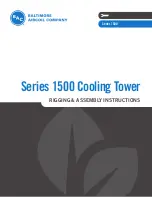
™
RTU Equipment Parts
RTU Specifications
Installing the RTU
Warning!
Verify that the RTU mounting location will not interfere with power lines or
utility wires that carry dangerous voltage. Contact with the wires can result
in severe injury or death.
Installing a Non-Penetrating Roof Mount
1.
Place the metal frame on a rubber mat where you plan to place the antenna.
2.
Connect the 31.75 mm (1-1/4-in) Schedule 40 metal pole to the frame using the angle supports.
Note:
The Schedule 40 metal pole has a 31.75 mm (1-1/4-in) inside diameter
and 42.16 mm(1.66-in) outside diameter.
3.
Use 10 concrete blocks 400 x 200 x 100 mm (16 x 8 x 4 in) in two rows of five to anchor the frame.
4.
See
on the opposite page.
Attaching the Mount Foot to Wood-Frame, Cinder Block, Concrete, or Brick
1.
Use a level to align the mount foot plate vertically, or parallel to any incline.
Part
Model Number
SP2000 Rooftop Unit, NA-A Band Plan, Version 2.0
Each of the models listed above include the following parts:
• RTU antenna assembly with electronics card
• Antenna mount clamp bracket
• Product Information Primer (PIP), SP2000 Series RTU
Items purchased separately:
• Non-Penetrating Roof Mount
• Penetrating Roof Mount
• Wall Mount
Note:
Ten Cinder Blocks or similar ballast are required for the Non-Penetrating Roof
Mount. The Cinder Blocks are not provided and must be obtained locally.
Cinder Block size: 400 mm x 200 mm x 100 mm (16 in x 8 in x 4 in.)
RTU-2000-28-3
3215974
MNT-RTU-NR
MNT-RTU-PR
MNT-RTU-WL
Operating Voltage & Power
RTU-2000-28-3:
+9.0 to +15.0 V DC
Transmission Power:
100 mW nominal
Diameter:
330 mm (13 in)
Depth:
300 mm (12 in)
Weight:
3.6 kg (8 lb) for RTU only (does not include
mounting components)
Operational Temperature Range:
–40° to +55° C (–40° to +131° F) ambient





























